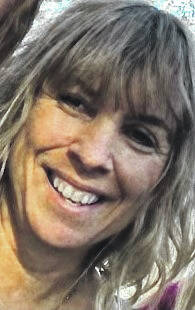Today I got to utilize some of the fitness training I do to solve an issue at my day job.
A wheelchair patient got a rope from the bag he was carrying tangled up in the front wheel of his ride. There was no way to untangle it without lifting the chair. Since he was unable to stand, I squatted down and lifted him and the chair off the ground as one of my nurses untangled the wheel. In order for me to hold up the chair while the knots were sorted out, I called upon my CrossFit training. If I didn’t have a strong core, legs, back and arms, chances are I either would not have been able to lift him or would have injured myself in the attempt. This is a perfect example of how functional fitness works.
Functional fitness is a type of training that readies your body for daily activities. In other words, functional fitness is exercise that supports your life. Pushing, pulling, squatting and carrying things are a part of everyday activity. If you can keep the muscles involved in said activities, you will be better able to carry them on successfully and without injury.
For years occupational and physical therapists have used functional training to get patients back after an injury, but guess what? Functional training is good for everyone. Let’s look at what the experts call the “Seven Fundamental Human Movements” and how to target your fitness towards them.
— Pull: Whether it is a wagon full of your kids, luggage at an airport, or pulling your dog on his leash off the neighbors’ flowers, we pull a lot during the day. Training for pulling can include pullups, or easier variations, and rowing.
— Push: Besides pushing our luck, there are plenty of daily activities that involve pushing. Grocery carts, lawn mowers, stalled cars and vacuum cleaners are just a few things that come to mind when discussing pushing. To train for pushing, work on pushups, bench dips and planking.
— Squat: The ability to squat down (and get back up) is key to many of life’s activities. Training for all the squatting we do includes, well, squats for one. Air squats are a perfect way to get started before adding any resistance.
— Lunge: I will freely admit that any exercise routine involving lunges is my least favorite. That said, it is also a movement I need to work on for my daily activities. The ability to lunge and stretch without pulling a muscle is sorely underrated. To improve your ability to lunge, work on stretching exercises for your calves and hamstrings, and strengthening your core muscles.
— Hinge: Hinging is one of the hardest movements to master but also the most important. Practically everything we do involves hinging at the waist and if we do it improperly or are not strong enough back issues will arise. Training your legs hamstrings and quads, and core muscles will make hinging easier. Pay attention to training muscles equally to prevent imbalances that can lead to injury.
— Twist: Twisting is important in reaching for things, as well as putting them in a different place. We use hinging to load and unload groceries from the car, doing laundry and recreational activities such as golf or softball. Keeping your core muscles in top shape and flexibility exercise will keep you twisting safely.
— Gait (walking): So for the most part folks walk every day in some form or fashion. Walking with good posture and balance are key. Strong legs, core, arms and shoulders can make walking more efficient. Check yourself in the mirror sometime and see what your walk looks like.
So there you have it — all the movements that keep you moving through life. Per usual, check with your physician before starting any new exercise plan and focus your fitness on these seven movements.
Kathy Hansen has more than 30 years of experience in the health and fitness field. She can be reached via e-mail at [email protected].










